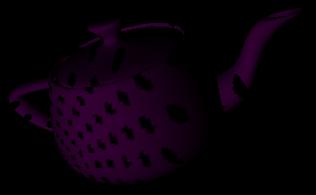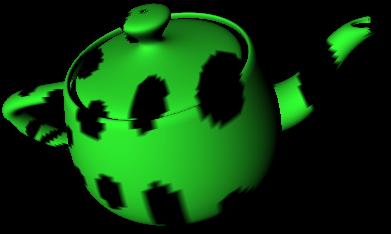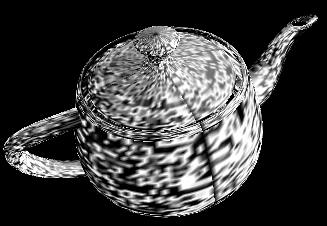 This is
my bump-mapped teapot: it's a lot more interesting when you can manipulate
it interactively and watch how the shadows change when it moves relative
to the light; statically, the bump map doesn't produce the most interesting
effect.
This is
my bump-mapped teapot: it's a lot more interesting when you can manipulate
it interactively and watch how the shadows change when it moves relative
to the light; statically, the bump map doesn't produce the most interesting
effect. 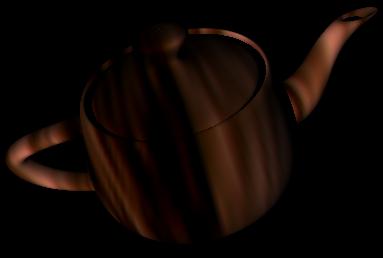
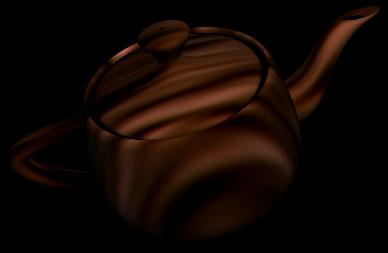
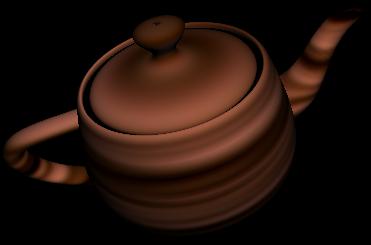 The preceding
three images are wood, with the grain running in three different directions.
It's made out of two applications of the noise function offset slightly
and added together.
The preceding
three images are wood, with the grain running in three different directions.
It's made out of two applications of the noise function offset slightly
and added together. This is my marble
shader -- two separate applications of the noise function, one low frequency
and one high frequency, and a third that is used only when its value falls
into a narrow range to produce the veined contours.
This is my marble
shader -- two separate applications of the noise function, one low frequency
and one high frequency, and a third that is used only when its value falls
into a narrow range to produce the veined contours.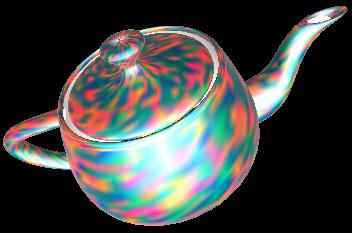 My real-world
shader is a wet gumball -- built from two applications of the noise function,
diffusely lit to add depth, and specularly highlighted to give the illusion
of being wet.
My real-world
shader is a wet gumball -- built from two applications of the noise function,
diffusely lit to add depth, and specularly highlighted to give the illusion
of being wet. My stencil
shader, with a red M tattooed over the teapot; you can also see variations
in the shade of the teapot (whose material is green) where the stencil
had different shades of gray.
My stencil
shader, with a red M tattooed over the teapot; you can also see variations
in the shade of the teapot (whose material is green) where the stencil
had different shades of gray.Lastly, my disco ball shader. I converted the light-to-surface vector to polar coordinates and then block it out where the two angles are within a certain distance of points on a grid -- user parameters control the grid spacing in two dimensions and the definition of "within a certain distance", to control disco ball dot spacing and size.
